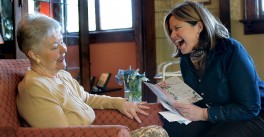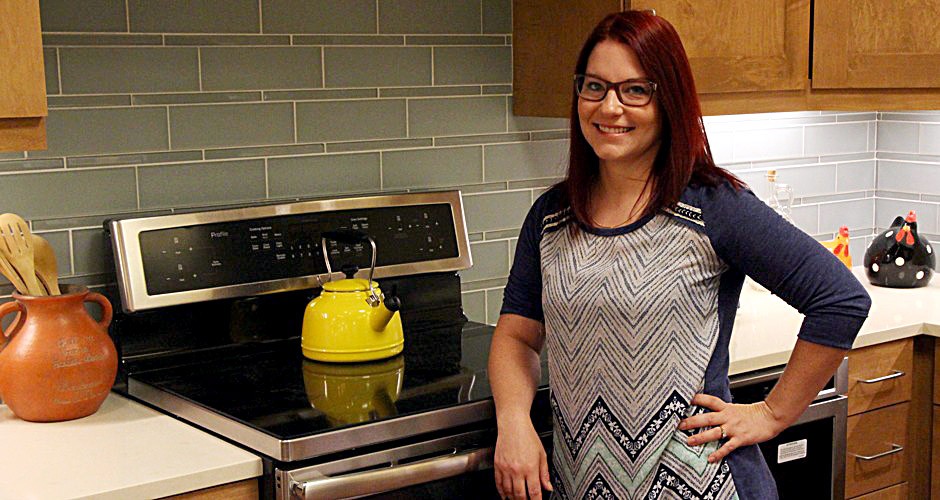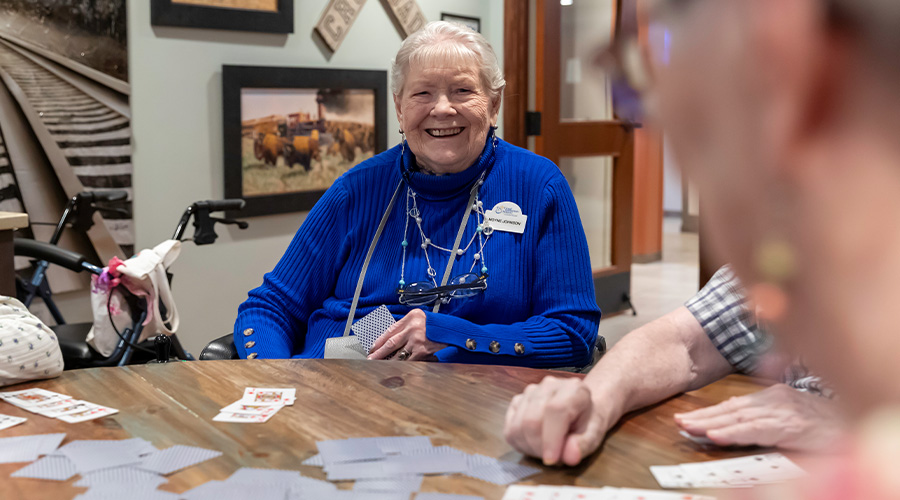It's not every day that over-baked brownies lead to a bonding experience.
But for Good Samaritan Society employee Sam Vongchantha and the memory care assisted living residents she was baking with, the crispy dish cooked up great cheer and camaraderie.
"We were baking brownies, and we have this high-tech, fancy stove," Sam says. "I accidentally set it to 23 hours instead of 23 minutes."
When the smell of baked brownies filled the air, residents insisted the dessert was done. Sam wasn't so sure because the timer hadn't gone off. But when she checked, the brownies were more than ready.
"They were a little hard, but we had a good laugh about how silly it was," she says.
All interactions matter
At memory care assisted living communities — like Olathe, Kansas where Sam works — employees have typical tasks like helping residents get ready for the day, tidying up apartments, checking on household supplies, or preparing for and cleaning up after meals.
But beyond these daily duties, employees also work with families to get to know each resident.
Memory care residents often struggle with communication. By learning more about each resident and their history, employees can initiate meaningful activities to help them.
Those activities might include baking brownies, talking about gardens, looking at photo albums or playing games.
According to the Alzheimer's Association, nearly 50 percent of people in long-term care have some form of dementia.
As this number rises, the Good Samaritan Society is also paying special attention to design features that can enhance life for the residents.
Connecting on a personal level
To learn more about each resident’s life and what is meaningful to them, the Good Samaritan Society uses a questionnaire called My Life's Journey.
Our employees can understand a resident's family history, interests, career and more by recording what they learn from residents and their families.
This allows them to find common ground with residents, and get a better understanding of their needs and desires.
For instance, if a resident was a homemaker all her life, documenting that in My Life's Journey could help us understand why the resident repeatedly takes her clothes to the laundry room.
Instead of telling a resident she can no longer do her own laundry, we might ask the resident to help with folding, or make a list of items needed to do laundry.
Specialized training for employees
People with dementia tend to thrive in environments that allow them to engage in familiar experiences, says Janet Tiemeyer, senior living systems consultant for the Good Samaritan Society.
So instead of getting a resident to focus on the present day, memory care assisted living employees are trained to recognize what the resident needs in the moment — even if that moment has taken them to Omaha Beach or a vacation in 1952.
Understanding how to meet residents where they are is just one component of employee training, and it's a large part of our commitment to providing resources to those with dementia and their families.

Janet says being attentive to what interests residents and making those things available helps provide residents with a sense of purpose, while also helping employees understand who the resident was and is.
This, in turn, can help combat behaviors that may arise as the disease progresses and the resident is unable to communicate what he or she wants or needs.
"In memory care assisted living, you have to be more creative to mitigate behaviors because (residents) can't tell you what's wrong. It's not their fault; it's just part of the process," Janet says.
"You have to put on your detective hat and work to find a solution. That's why specialized training and ongoing discussions about behaviors and engagement are so important."
Big effects of small activities
In the case of the burned brownies, Michelle Kutner, dementia and memory care senior consultant for the Good Samaritan Society, says the experience was important because the residents were able to contribute and interact with each other.
"They could give their opinion about the experience, and it may even have triggered a past cooking experience that they had," she says.
"When you ask residents to participate in this hands-on activity, it sends the message that the resident’s opinions matter and helps them feel like they have a sense of purpose and have something to contribute."
Sam says the experience was a lesson for her in work and life.
"I didn't know you could tell brownies were done just by smelling them, but they still knew that smell," she says. "It turned out good because we laughed and had a good time, just making memories."




